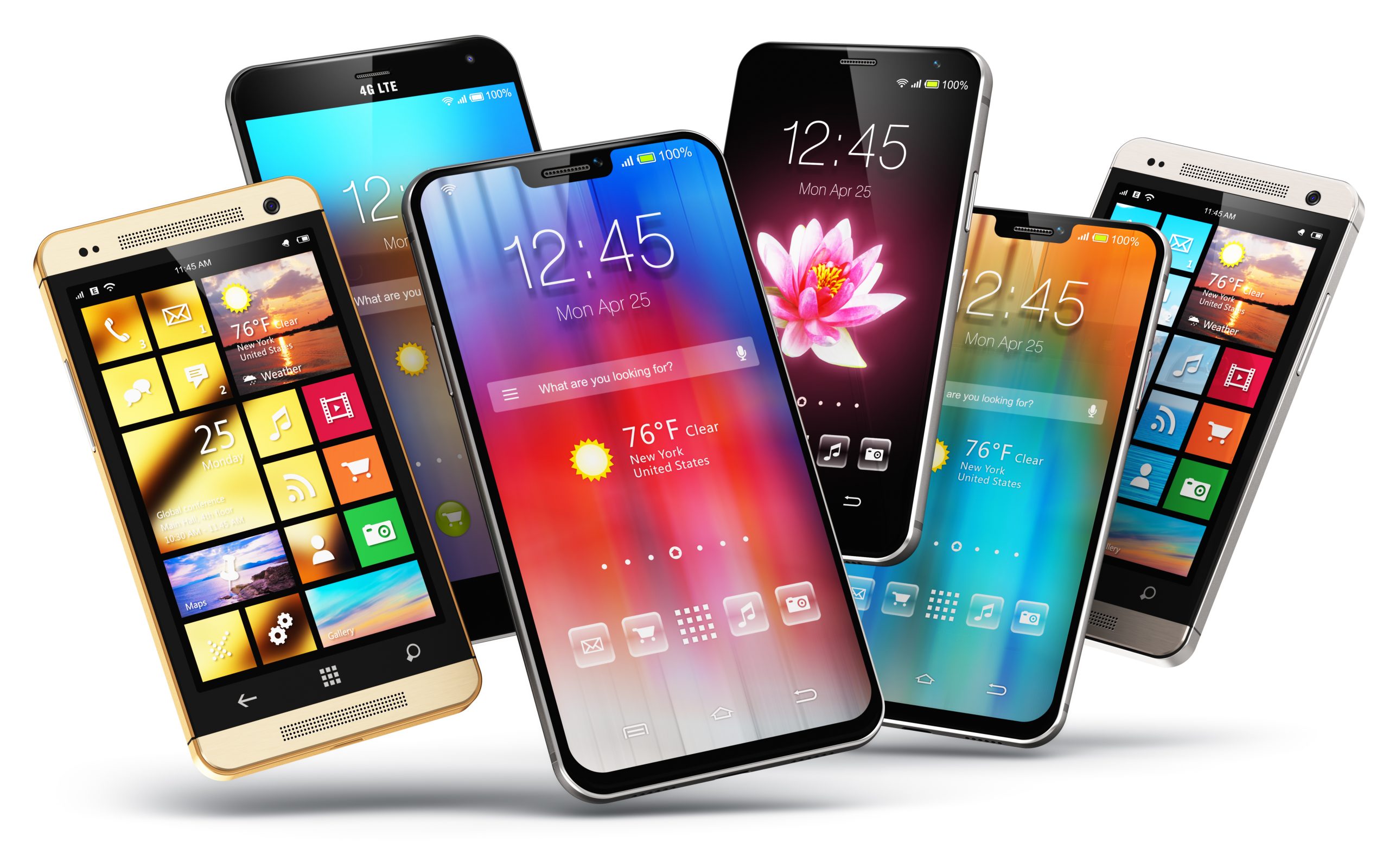
Smartphone Security Tips to Protect Your Data Privacy and Personal Information
Smartphone Security Tips to Protect Your Data Privacy and Personal Information
Introduction
Smartphones have become an integral part of our daily lives, storing not just our communications, but also sensitive personal data such as bank information, passwords, and photos. However, this makes smartphones an attractive target for cybercriminals. In this article, we will explore essential smartphone security tips that can help you protect your personal information and data privacy.
Table of Contents
- Introduction to Smartphone Security
- Why Smartphone Security is Crucial
- Common Threats to Smartphone Security
- Use Strong Passwords and Biometrics
- Enable Two-Factor Authentication (2FA)
- Keep Your Operating System and Apps Updated
- Install a Reliable Antivirus/Anti-Malware App
- Avoid Public Wi-Fi for Sensitive Transactions
- Use Virtual Private Network (VPN) for Browsing
- Be Cautious with App Permissions
- Secure Your Backup Data
- Encrypt Your Smartphone Data
- Use Trusted Sources for App Downloads
- Avoid Jailbreaking or Rooting Your Device
- Monitor Your Smartphone’s Battery Usage
- Protect Your Phone with Screen Lock
- Be Aware of Phishing and Scam Attacks
- Use Remote Tracking and Wiping Features
- Secure Your Wi-Fi Network
- Educate Yourself on Mobile Security Best Practices
- Manage App Data and Storage Properly
- Protect Your Email and Messaging Apps
- Secure Your Cloud Storage
- Monitor Financial and Banking Apps
- Privacy Settings for Social Media
- Avoid Clicking on Suspicious Links
- Disable Bluetooth and NFC When Not in Use
- Regularly Backup Your Smartphone Data
- Signs Your Smartphone is Compromised
- Conclusion: Stay Safe, Stay Secure
1. Introduction to Smartphone Security
In today’s digital world, smartphones are no longer just communication devices. They are used for online shopping, banking, work, entertainment, and more. As a result, the data on these devices is extremely valuable, making it a prime target for hackers. Understanding how to protect your smartphone’s data is key to safeguarding your personal information.
2. Why Smartphone Security is Crucial
Smartphone security is essential because of the sensitive information these devices store. Personal data such as credit card details, social security numbers, emails, photos, and even work-related documents can be compromised if your smartphone is hacked or stolen. With smartphones becoming increasingly integrated into our lives, securing them is not just important, but a necessity.
3. Common Threats to Smartphone Security
Before diving into security tips, it’s important to understand the threats your smartphone faces. Common threats include:
- Malware: Harmful software that can steal your data or cause other damage.
- Phishing: Fraudulent attempts to obtain sensitive information by pretending to be a legitimate entity.
- Data Breaches: When hackers gain unauthorized access to your personal data.
- Device Theft: Losing your phone to theft or misplacement, exposing your data.
4. Use Strong Passwords and Biometrics
The first line of defense in protecting your smartphone is a strong password or PIN. Avoid using easy-to-guess passwords such as “1234” or “password.” Consider using a combination of letters, numbers, and symbols to create a stronger password. Additionally, enable biometric features such as fingerprint scanning or facial recognition for added protection.
5. Enable Two-Factor Authentication (2FA)
Two-Factor Authentication adds an additional layer of security. Even if someone steals your password, they will still need the second form of verification (like a text message or authentication app) to access your accounts. Enabling 2FA on your smartphone ensures a higher level of protection against unauthorized access.
6. Keep Your Operating System and Apps Updated
Manufacturers regularly release updates to fix security vulnerabilities. Always install updates for your smartphone’s operating system and apps as soon as they become available. These updates often include patches for known security risks and help protect your data from being compromised.
7. Install a Reliable Antivirus/Anti-Malware App
While smartphones are less prone to viruses compared to computers, they are still vulnerable to malware and malicious apps. Installing a trusted antivirus or anti-malware app can help detect and remove threats, providing an additional layer of security.
8. Avoid Public Wi-Fi for Sensitive Transactions
Public Wi-Fi networks, such as those found in cafes or airports, are not secure. Cybercriminals can easily intercept your data on these networks. Avoid conducting sensitive activities like online banking or shopping while connected to public Wi-Fi. If you must use it, ensure you’re connected to a Virtual Private Network (VPN) for secure browsing.
9. Use Virtual Private Network (VPN) for Browsing
A VPN encrypts your internet traffic, preventing hackers from intercepting your data. When browsing the web on your smartphone, especially on public networks, always use a VPN to protect your data privacy. VPNs also help to mask your IP address, making it harder for third parties to track your online activities.
10. Be Cautious with App Permissions
When installing apps, they may request permissions to access your camera, microphone, contacts, or location. Always review these permissions carefully and only grant them when necessary. Avoid granting unnecessary permissions to apps that don’t need them for their functionality.
11. Secure Your Backup Data
Backing up your data is essential in case your phone is lost or compromised. However, it’s equally important to ensure that your backup is secure. Use encrypted cloud services or an external device for storing backups. Ensure that any backup service you use has strong security measures in place to protect your information.
12. Encrypt Your Smartphone Data
Encrypting your smartphone’s data ensures that even if your device is lost or stolen, your data remains inaccessible. Most modern smartphones offer encryption features, which should be enabled to safeguard your personal information.
13. Use Trusted Sources for App Downloads
Only download apps from official app stores like Google Play Store or Apple’s App Store. These platforms have stringent security checks to reduce the likelihood of downloading malicious software. Avoid third-party app stores that may host unsafe apps.
14. Avoid Jailbreaking or Rooting Your Device
Jailbreaking (iOS) or rooting (Android) your device can disable built-in security features and expose your device to malware and other security risks. It’s best to avoid jailbreaking or rooting your smartphone to maintain its integrity and security.
15. Monitor Your Smartphone’s Battery Usage
Unusual battery drain can be a sign that a malicious app is running in the background. Keep an eye on your battery usage and identify any apps that use excessive power. If an app is using too much battery, it may be compromised and should be removed.
16. Protect Your Phone with Screen Lock
Setting up a screen lock—whether it’s a pattern, PIN, or password—adds an extra layer of protection. This simple step can help prevent unauthorized access to your device, especially if it’s lost or stolen.
17. Be Aware of Phishing and Scam Attacks
Phishing attempts often come in the form of fake emails, text messages, or pop-ups designed to trick you into revealing personal information. Be cautious of unsolicited communications that ask for sensitive data. Always verify the source before clicking on links or providing information.
18. Use Remote Tracking and Wiping Features
If your smartphone is lost or stolen, using remote tracking and wiping features can help you protect your data. Services like Find My iPhone or Find My Device allow you to track your phone’s location and remotely erase your data if necessary.
19. Secure Your Wi-Fi Network
Ensure that your home Wi-Fi network is secure by using WPA3 encryption and a strong password. Avoid using default router passwords, and change them regularly. Also, disable WPS (Wi-Fi Protected Setup) to enhance security.
20. Educate Yourself on Mobile Security Best Practices
Stay informed about the latest security threats and mobile security best practices. Cybersecurity is a rapidly evolving field, and new threats emerge regularly. Keeping up to date with security tips and trends will help you stay one step ahead of potential risks.
21. Manage App Data and Storage Properly
Be mindful of the data that your apps store. Regularly review app storage usage and delete unnecessary data to minimize the risk of sensitive information being exposed. Apps with excessive storage usage may also be prone to security vulnerabilities.
22. Protect Your Email and Messaging Apps
Email and messaging apps are prime targets for cybercriminals. Use strong passwords and enable two-factor authentication on your email and messaging accounts. Be cautious when clicking on links or downloading attachments, as these can be used to spread malware.
23. Secure Your Cloud Storage
Many people store important data in the cloud. Ensure that your cloud storage accounts are protected with strong passwords and two-factor authentication. Encrypt sensitive data before uploading it to the cloud to prevent unauthorized access.
24. Monitor Financial and Banking Apps
Banking apps and financial transactions are prime targets for cybercriminals. Regularly monitor your financial apps for unauthorized activity, and always use strong passwords and two-factor authentication to secure your accounts.
25. Privacy Settings for Social Media
Social media apps often collect personal information that can be misused. Review your privacy settings on social media platforms and limit the amount of personal information you share. Be cautious about sharing location data or other sensitive details publicly.
26. Avoid Clicking on Suspicious Links
Be cautious about clicking on links in unsolicited emails, texts, or social media messages. Cybercriminals often use these links to lead you to phishing sites or install malware on your device.
27. Disable Bluetooth and NFC When Not in Use
Bluetooth and NFC (Near Field Communication) can be vulnerable to attacks when left enabled. Turn off Bluetooth and NFC when you’re not using them to minimize the risk of unauthorized access to your device.
28. Regularly Backup Your Smartphone Data
Backing up your data ensures that you won’t lose important information if your phone is compromised or damaged. Regular backups will help you restore your data to a new device or after a security breach.
29. Signs Your Smartphone is Compromised
Unusual behavior such as sudden battery drain, unfamiliar apps, or slow performance can indicate that your phone has been compromised. If you notice any of these signs, run a malware scan and take immediate action to secure your device.
30. Conclusion: Stay Safe, Stay Secure
Securing your smartphone is essential for protecting your personal data and privacy. By following these tips, you can significantly reduce the risk of security threats and ensure that your smartphone remains a safe and secure tool for everyday use.


